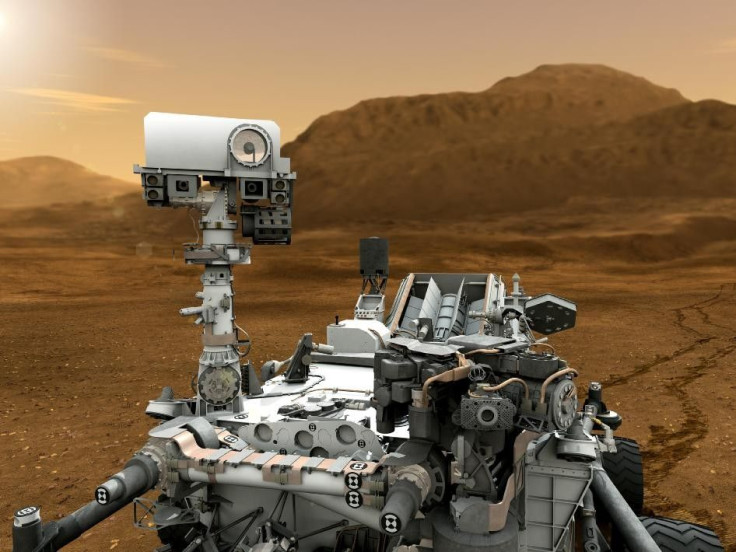Curiosity 1 Year Anniversary On Mars: NASA Looks Back On Rover's Scientific Discoveries

A year ago, pulses were quickening at NASA. The U.S. space agency had hurled a car-sized robot toward Mars in November 2011, and after 350 million miles, the spacecraft was about to execute a landing of a type that had never yet been attempted: a complex technical ballet dubbed the “Seven Minutes of Terror.”
Since Curiosity is around five times heavier than its robotic siblings Spirit and Opportunity, NASA couldn't use the usual landing strategy of swaddling the robot in an airbag and flinging it onto the planet’s surface. Instead, Curiosity was lowered to the ground in the final stage of its descent with a "sky crane," a system of cables and wires attached to a hovering rocket-platform.
But, thankfully, the seven minutes of terror, nail-biting as they were, went off without a hitch. Curiosity set its wheels down on the Martian surface early in the morning (at least for those on the U.S. East Coast) on Aug. 6, 2012. Since then, it’s been collecting samples, inspecting ancient rock formations and searching for signs of ancient extraterrestrial life on one of the most advanced Mars missions ever undertaken. Its ultimate destination is Mount Sharp (Aeolis Mons), an 18,000-foot-high mountain looming over the Gale Crater.
Success came even before the rover began to climb the mountain. This March, Curiosity found some of the most fundamental building blocks of life as we know it locked in Martian rocks. The presence of carbon, sulfur, nitrogen, hydrogen, oxygen and phosphorus is strong evidence that, at one time, Mars could have supported life.
One of the more potent tools that allowed Curiosity to deduce the presence of these essential elements is the SAM, which stands for Sample Analysis at Mars. It’s a little scoop on the rover's arm that allows it to take a closer look at Martian soil than any other instrument on the planet before. SAM analyzes soil samples by heating them in a tiny oven and observing the gases that result.
"We now know Mars offered favorable conditions for microbial life billions of years ago," mission project scientist John Grotzinger said in a statement. "It has been gratifying to succeed, but that has also whetted our appetites to learn more. We hope those enticing layers at Mount Sharp will preserve a broad diversity of other environmental conditions that could have affected habitability."
The rover has also found some interesting, if less scientifically significant formations: rocks that look like flowers, or robot arms or rats.
Altogether, the rover has driven just one mile, but it’s been an intensely focused mission. In one year, Curiosity has beamed back more than 190 gigabits of data and 70,000 images, and fired its special laser 75,000 times. The rover is also continuing to collect data that could prove useful to any future manned missions to the Red Planet.
"Successes of our Curiosity -- that dramatic touchdown a year ago and the science findings since then -- advance us toward further exploration, including sending humans to an asteroid and Mars," NASA Administrator Charles Bolden said in a statement. "Wheel tracks now will lead to bootprints later."
© Copyright IBTimes 2024. All rights reserved.





















